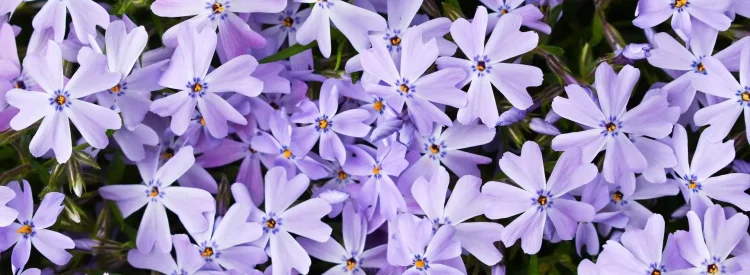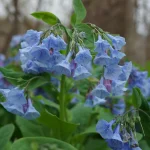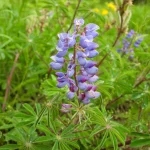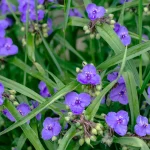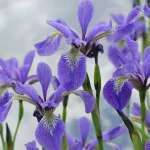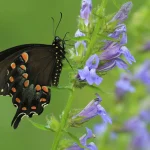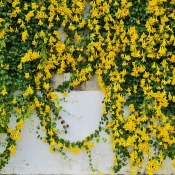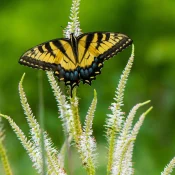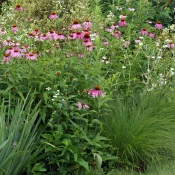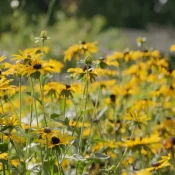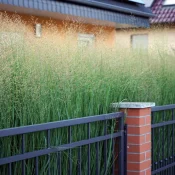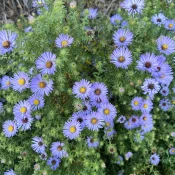Phloxes are one of the rare native plants that have been embraced in American landscaping for generations. This group (or genus) of native plants includes around sixty gorgeous North American options that bloom from spring to fall. Some phloxes are tall with hydrangea-like orbs of flowers. Other phloxes are short groundcovers covered in flowers in the spring. Let’s meet a few options that are perfect for American and Canadian gardens.
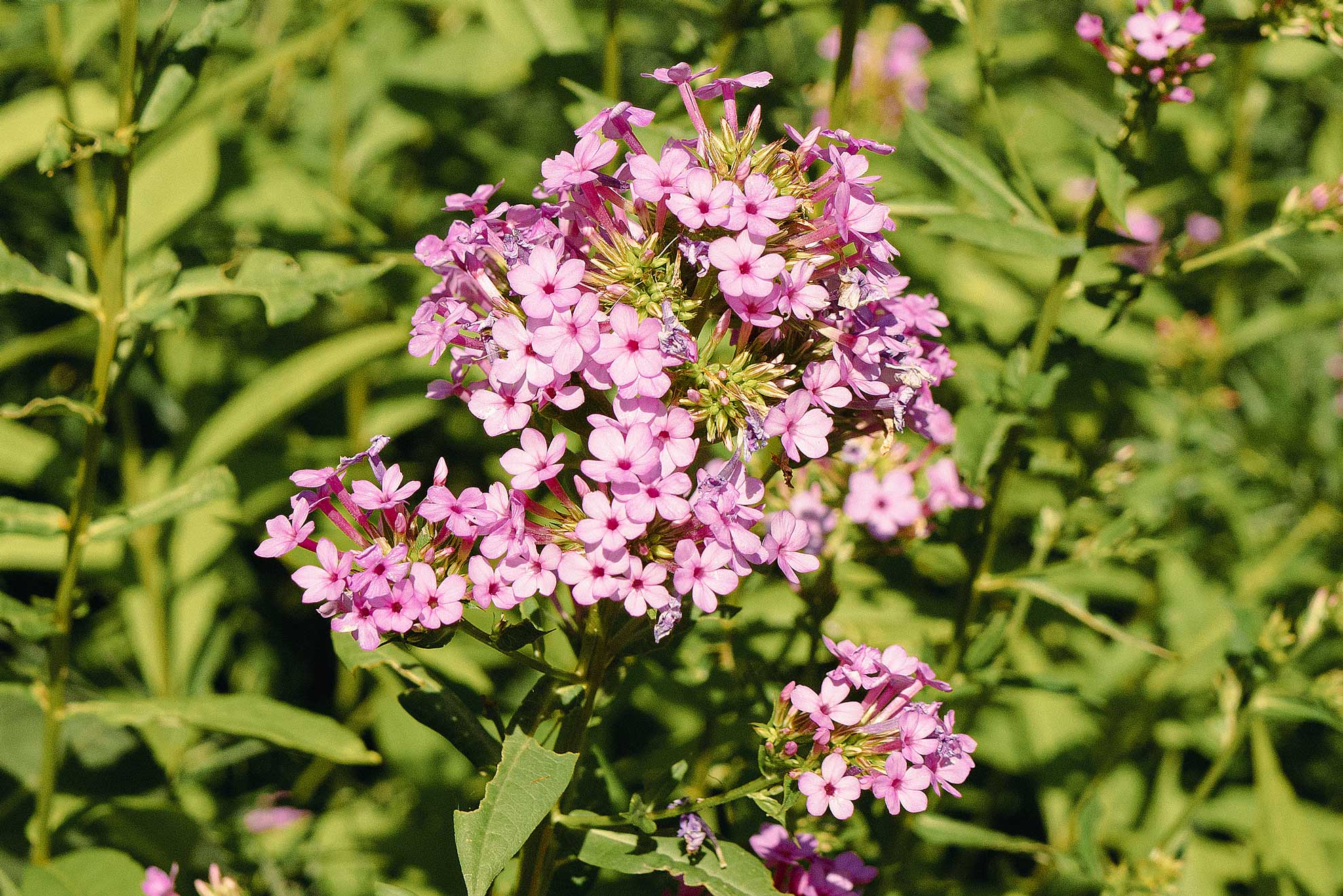
The single name ‘phlox’ doesn’t do justice to the wide-ranging nature of these plants. In this article, we’ll introduce three general buckets of phloxes, meet a few species within each, and share many pictures along the way. Let’s dig in with a basic question.
How do I pronounce ‘phlox’?
You pronounce it as flocks or flox. It rhymes with box, lox, and fox.
When does phlox bloom?
It depends on the species. Some phlox are early spring bloomers, while others last from summer to fall.
In fact, “it’s possible to have a garden colorful from spring to fall using the genus Phlox alone,” according to native plant expert Hal Bruce.
Let’s meet the different species that offer multiple seasons of flowers.
Generally speaking, there are three kinds of phlox
As mentioned earlier, there are around sixty species of phlox native to North America (a handful are native to Asia, but the vast majority are North American). If we were to count cultivars in this number, the count would grow to hundreds of phloxes. More on cultivars later in the article.
Native phloxes can be grouped into three general buckets, organized by bloom-time and height:
Spring-blooming + short
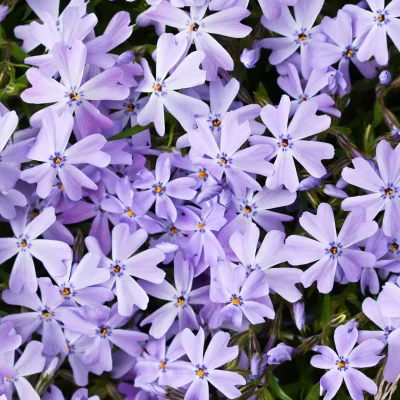
- Creeping or Moss Phlox
- Spring flowers
- Semi-evergreen
- Short: 6″
Species include:
Phlox subulata
Phlox stolonifera
Phlox nivalis
Spring-blooming + tallish

- Woodland Phlox
- Spring flowers
- Shade to part shade
- Tallish: 2-3′
Species include:
Phlox divaricata
Phlox pilosa
Summer-blooming + tall
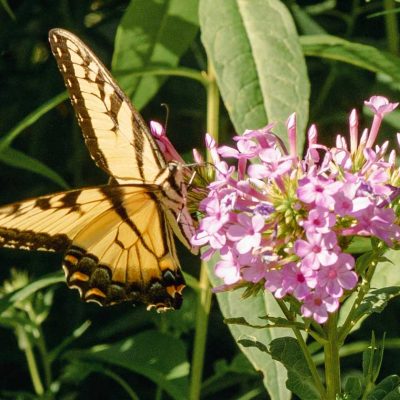
- Summer Phlox
- Summer flowers
- Sun to part sun
- Tall: 3-5′
Species include:
Phlox maculata
Phlox paniculata
Now that we know the three general buckets, let’s meet some species within each. We’ll go in the same order, which also corresponds to their bloom time.
There are dozens of phloxes native to North America. Here are a few options that are usually found at native plant nurseries.
Short, Spring-blooming phloxes
Phlox subulata, Phlox stolonifera, Phlox nivalis
There are a few species of native phlox that stay short and bloom in the spring. If you’re looking to learn more about these plants in particular, head over to our profile on the needle-leafed Creeping Phlox (P. subulata).
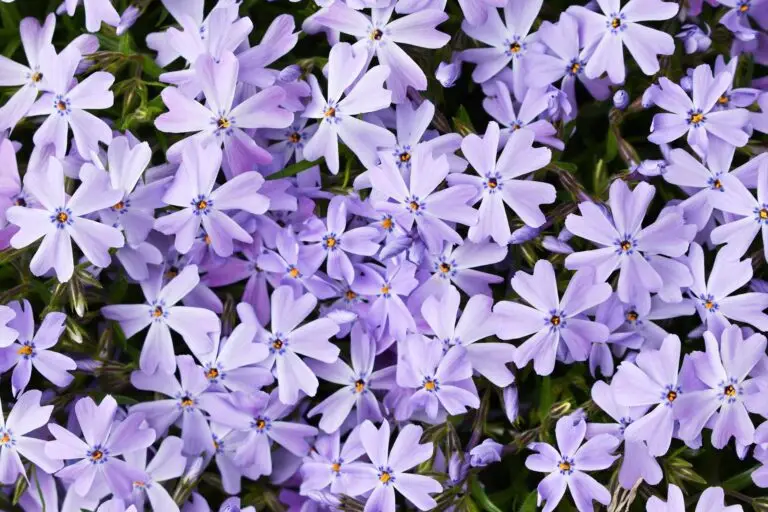
Creeping or Moss Phlox
Phlox subulata
This is perhaps the most ubiquitous of the native phloxes—you might even have this in your yard right now. You can identify this species by its needle-like leaves and shortness. This plant rarely gets taller than 6 inches.
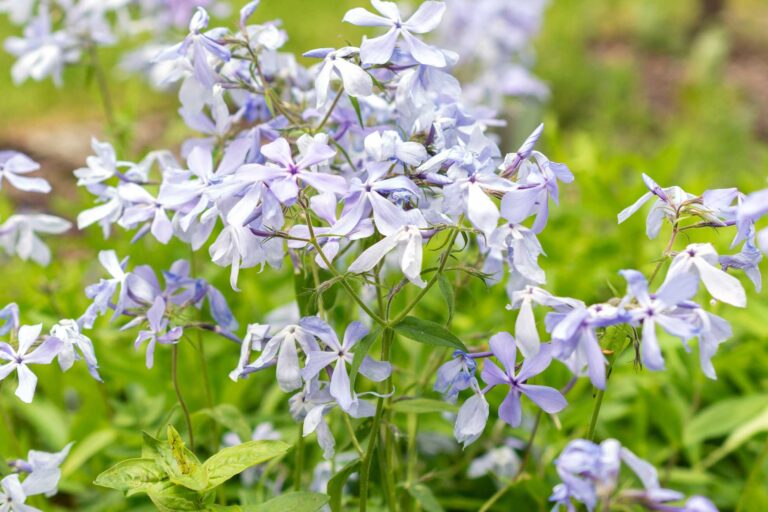
Creeping or Moss Phlox
Phlox stolonifera
I know—it goes by the same common name—Creeping or Moss Phlox—as the other species. It’s so confusing. This is one reason why Latin names are useful. Every plant has only one Latin name.
You can tell if it’s Phlox stolonifera from its leaves and height. This species’ leaves are oblong and its flowers appear on thin, short 1-2′ stems.
Tallish spring-blooming phloxes
Phlox divaricata, Phlox pilosa
These phloxes are often referred to as “Woodland Phlox.” Woodland Phlox loves filtered, shady or part shade areas. Its elegant orb-like flowers grow in clumps. Cultivar options offer a range of colors and heights.
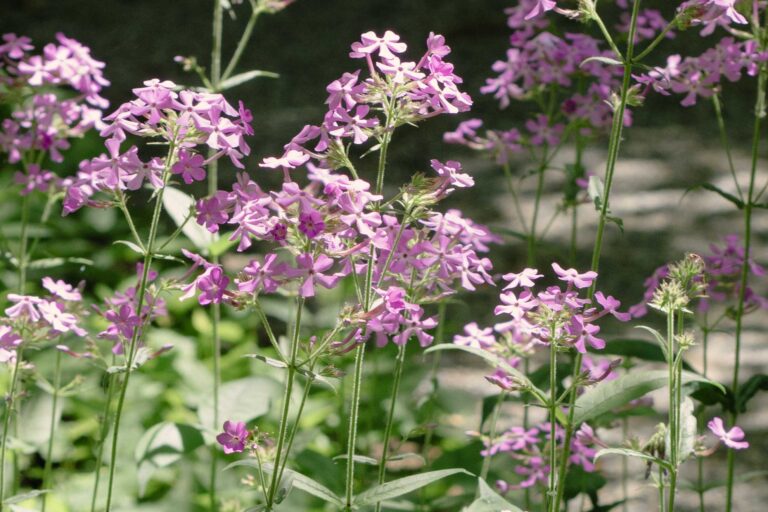
Woodland Phlox
Phlox divaricata
This airy gem of a flower looks lovely and smells amazing. Its colors range from blue to lavender, light pink, and white. They like rich soil and thrive in shade to part shade areas. Plant them alongside native azaleas, foamflower, alum root, and dogwoods for a stellar garden.
Tall summer phloxes
Phlox maculata, Phlox paniculata
When you plant Summer Phlox in your garden, you are guaranteed butterflies (especially swallowtails.) Their tall umbrellas of flowers offer a perfect platform for butterfly access.
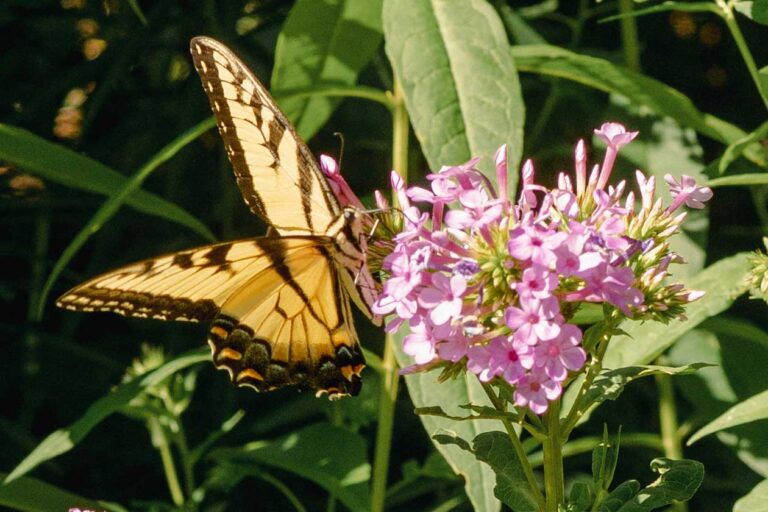
Summer Phlox
Phlox paniculata
Summer Phlox can get tall—2-4’—and offers fistfuls of flowers in the summer into fall. As mentioned, these are butterfly magnets. Their butterfly-attracting abilities partly come from their large clumps of flowers—a butterfly can easily spend a few minutes sipping nectar from a single plant.
Can I see an overview of these phlox species?
Absolutely! Here’s a quick overview:| Species | Bloom Time | Colors | Height |
|---|---|---|---|
| P. subulata | Spring | Red, pink, blue, white | 6″ |
| P. stolonifera | Spring | Blue, pink, white | 1-2′ |
| P. divaricata | Spring | Blue, white, lavender, pink | 2-4′ |
| P. paniculata | Summer | Pink, lavender | 2-4′ |
What about the other sixty-ish Phlox species?
Wikipedia lists 68 species (as of this publication date), most native to North America.
Where can I find native phlox?
Finding native phlox is either easy or a little challenging, depending on the species.
The good news about native phlox—especially Creeping or Moss Phlox—is that they are widely available at conventional and local plant nurseries. Even big box retailers carry this plant (although we don’t recommend them because of their common use of herbicides and pesticides.)
To find the widest selection of native phloxes, we have four sourcing ideas to share:
Where can I find seeds and plants?
Finding native plants can be challenging (we partly blame Marie Antoinette.) To make it easier, we’ve assembled four sourcing ideas.
300+ native nurseries make finding one a breeze
Explore 100+ native-friendly eCommerce sites
Every state and province has a native plant society; find yours
Online Communities
Local Facebook groups are a great plant source
What are good pairings for phlox?
There are hundreds of native flowers, shrubs, and trees that make for great phlox pairings. One goal of native gardening is to have something blooming throughout the growing season so pollinators always have something to eat. With this goal in mind, here are some options for seasonally-based pairings.
Native flowers for spring
Native flowers for summer
Congrats, you’ve met some of the native phloxes! There are approximately sixty species native to North America (along with hundreds of cultivars.) The three different categories of phloxes offer blooms throughout the growing season. Why not plant at least one species from each grouping and enjoy months of phloxes? Happy planting!
Sources
- Brandes, Kate. Native Plants for the Small Yard: Easy, Beautiful Home Gardens that Support Local Ecology. Maxfield Design, 2024.
- Bruce, Hal. How to Grow Wildflowers and Wild Shrubs and Trees in Your Own Garden. New York: Alfred A. Knopf, 1976. 79-82.
- North Carolina State University Extension. “Phlox subulata.” NC State Extension Plants. Accessed July 21, 2024. https://plants.ces.ncsu.edu/plants/phlox-subulata/.
- North Carolina State University Extension. “Phlox stolonifera.” NC State Extension Plants. Accessed July 21, 2024. https://plants.ces.ncsu.edu/plants/phlox-stolonifera/.
- North Carolina State University Extension. “Phlox divaricata.” NC State Extension Plants. Accessed July 21, 2024. https://plants.ces.ncsu.edu/plants/phlox-divaricata/.
Blue is a rare color in nature! Here are some other options.
What if your feed was actually good for your mental health?
Give your algorithm a breath of fresh air and follow us.
